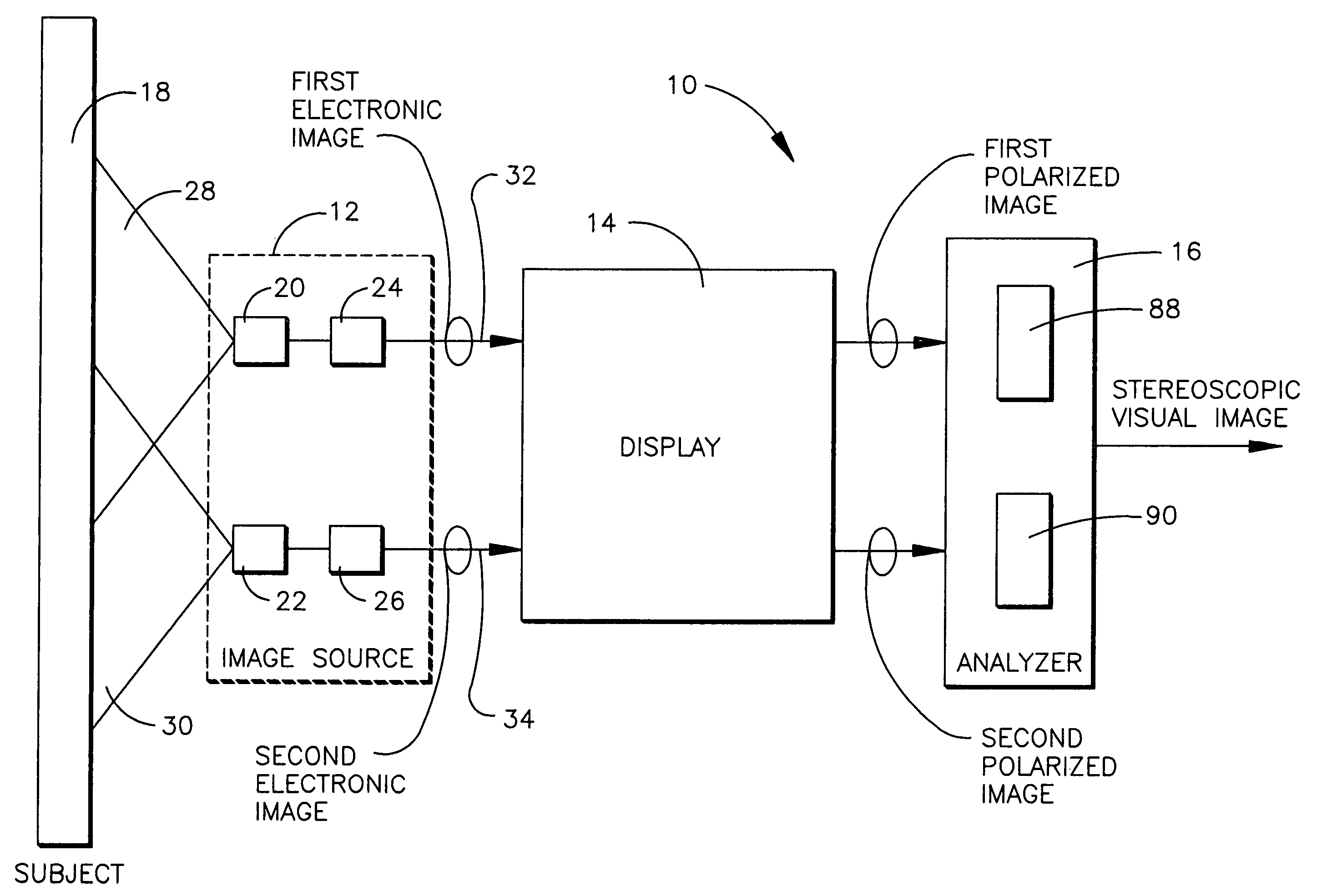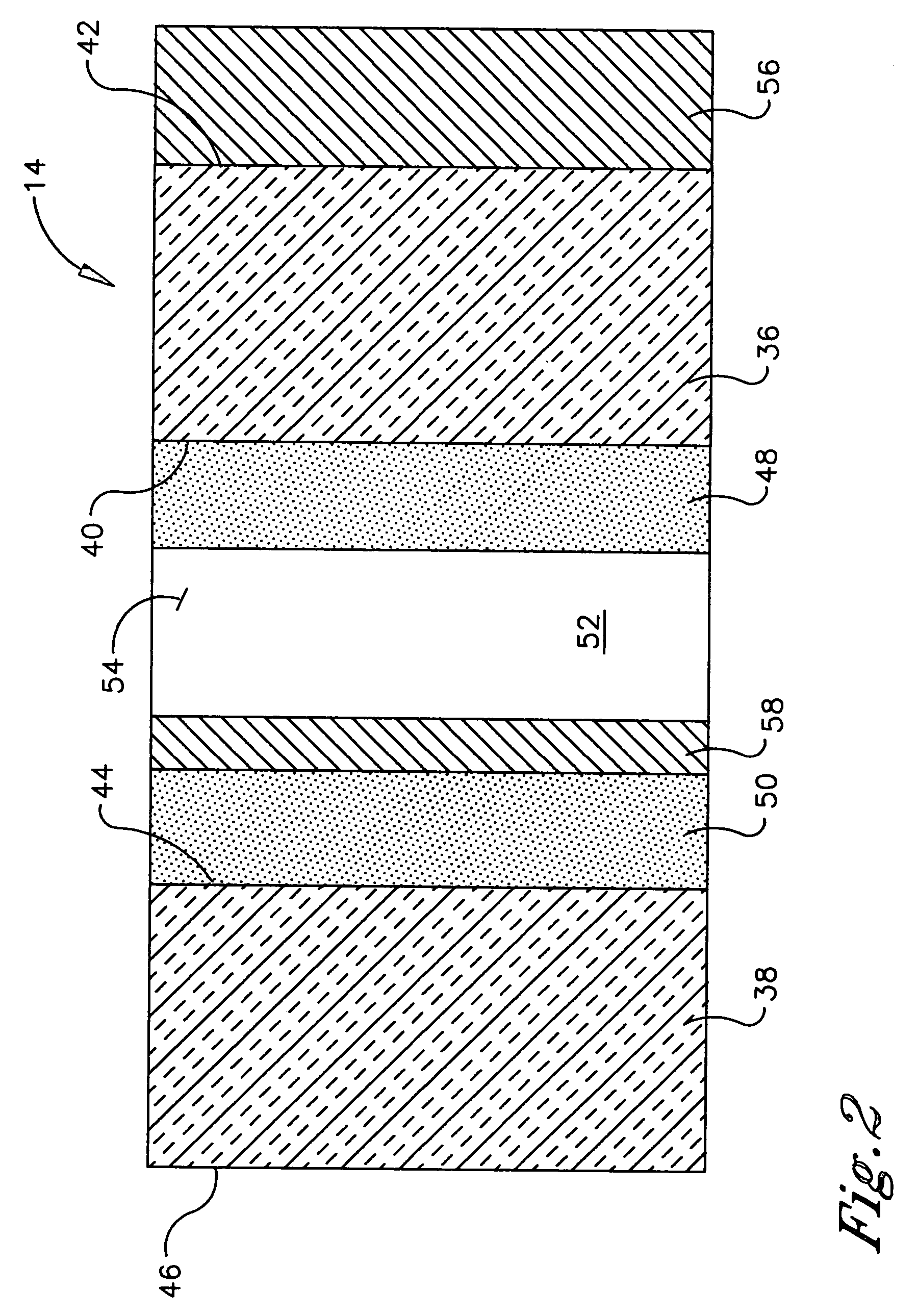Stereoscopic imaging assembly employing a flat panel display
a stereoscopic imaging and flat panel display technology, applied in the field of stereoscopic imaging, can solve the problems of not being easily adaptable to visual navigation applications for vehicles with severe space constraints, affecting the accuracy of stereoscopic imaging, so as to eliminate half-black imaging and reduce the parallax of the first and second polarized images
- Summary
- Abstract
- Description
- Claims
- Application Information
AI Technical Summary
Benefits of technology
Problems solved by technology
Method used
Image
Examples
Embodiment Construction
[0029]Referring to FIG. 1, an embodiment of the stereoscopic imaging assembly of the present invention is shown and generally designated 10. The stereoscopic imaging assembly 10 has a plurality of components functioning in series along an image pathway, which extends from an image source to an analyzer. In particular, the stereoscopic imaging assembly 10 comprises an image source 12, a display 14, and an analyzer 16. The stereoscopic imaging assembly 10 has general utility to essentially any application which requires or benefits from the conversion of a true visual image of a subject 18 to a stereoscopic visual image of the subject 18 for viewing by a person having visual access to the display 14 and analyzer 16, but not necessarily to the subject 18. The stereoscopic imaging assembly 10 is described below in the context of a specific application, i.e., visual navigation of a vehicle, for purposes of illustrating a preferred embodiment of the stereoscopic imaging assembly 10. Howev...
PUM
| Property | Measurement | Unit |
|---|---|---|
| thickness | aaaaa | aaaaa |
| size | aaaaa | aaaaa |
| size | aaaaa | aaaaa |
Abstract
Description
Claims
Application Information
 Login to View More
Login to View More - R&D
- Intellectual Property
- Life Sciences
- Materials
- Tech Scout
- Unparalleled Data Quality
- Higher Quality Content
- 60% Fewer Hallucinations
Browse by: Latest US Patents, China's latest patents, Technical Efficacy Thesaurus, Application Domain, Technology Topic, Popular Technical Reports.
© 2025 PatSnap. All rights reserved.Legal|Privacy policy|Modern Slavery Act Transparency Statement|Sitemap|About US| Contact US: help@patsnap.com



